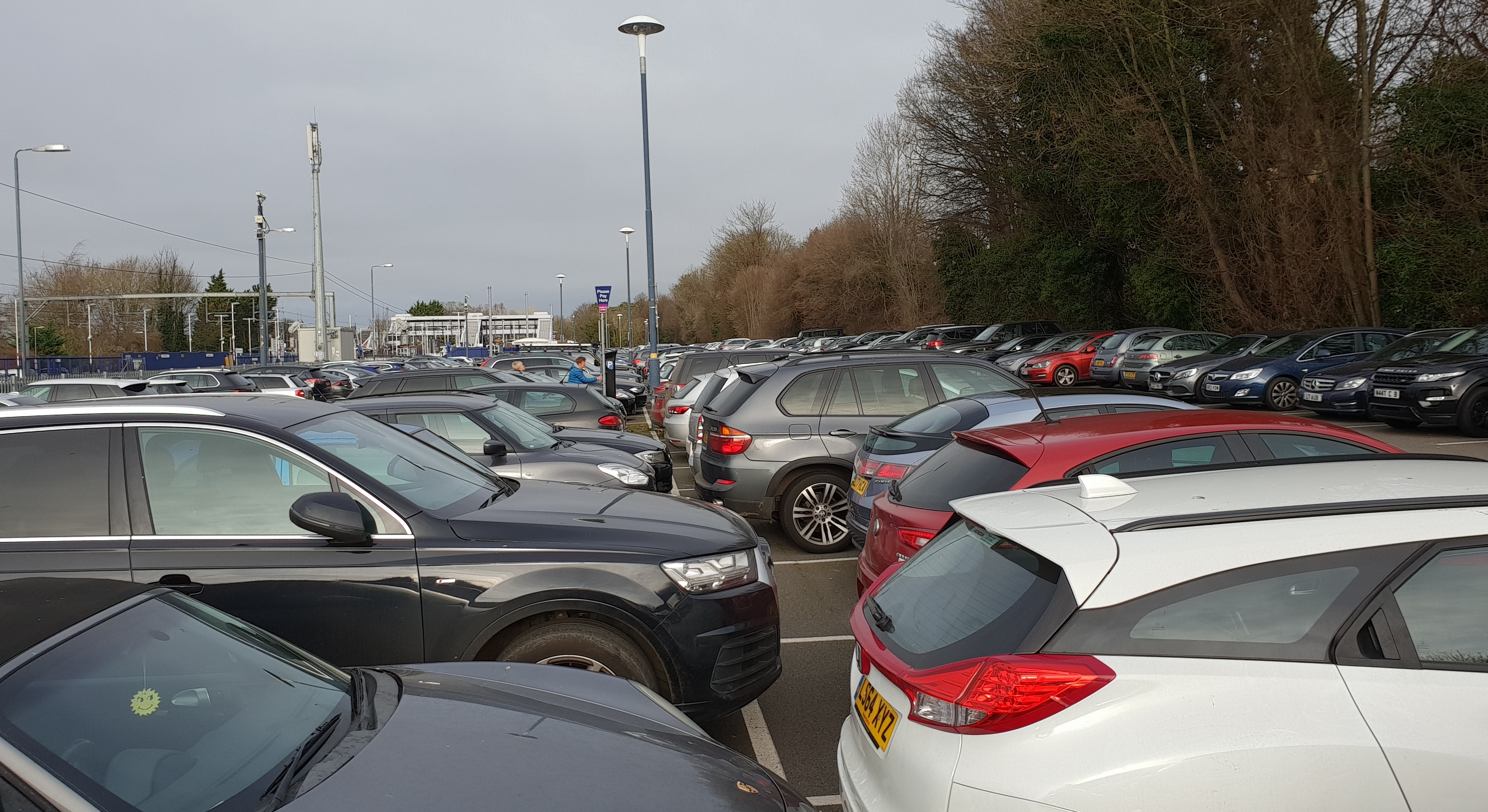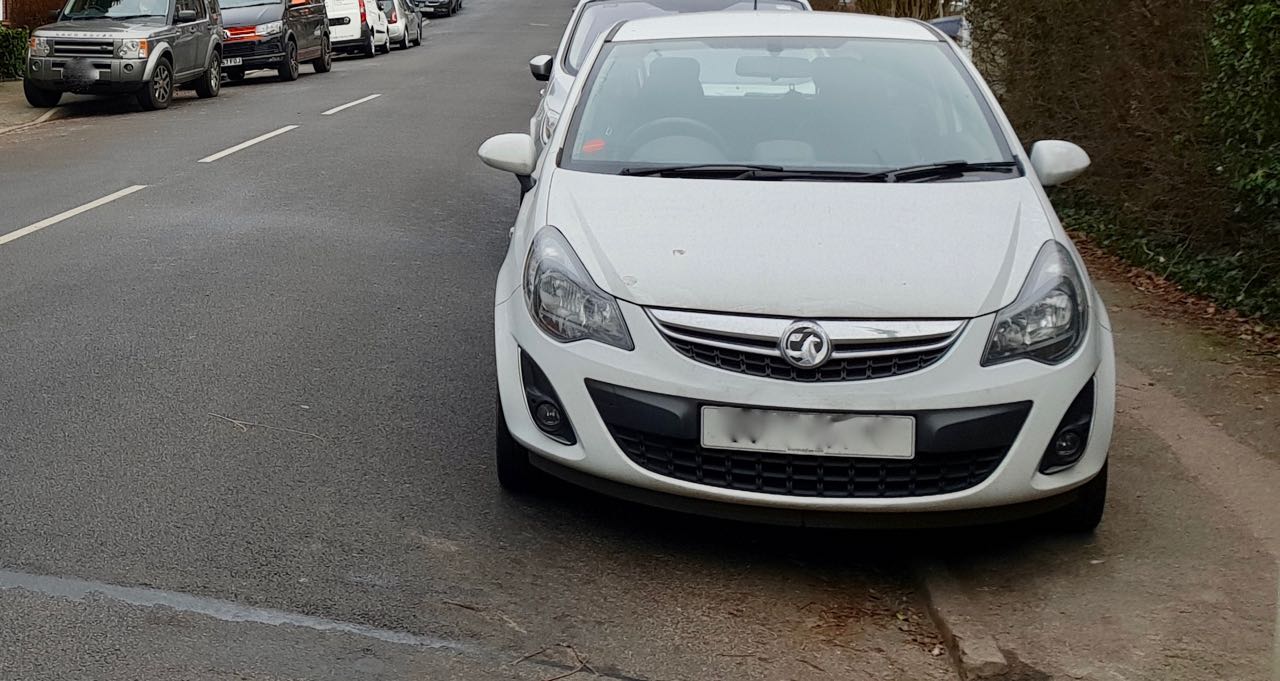

Hoping for easier parking? - don't hold your breath !
‘Only a miracle worker can solve Harpenden's parking problems'. That was the view expressed by one of the hundred or so residents who attended the public meeting in mid-January convened by The Harpenden Society to address the many ramifications of the town's car parking issues. There were murmurs of agreement throughout the High Sreeet Methodist Church hall.
Much of the meeting, chaired by Society chairman Phil Waters, was spent on identifying the problems, which as everyone agreed were getting progressively worse. John Talbot, representing HarPark, the group formed about four years ago, initially to address parking issues in The Avenues area of the town, put the issues into context. He said a 2014 report declared that ‘Harpenden may be characterised as an extremely busy highway running through a dense and heaving car park'. Five years on and there had, by common consent, been no easing of the pressure. Quite the contrary - the volume of traffic and the commensurate demand for parking spaces had grown exponentially.
It was pointed out by many of those at the meeting that there were parking challenges beyond the more obvious town centre and railway station locations. A holistic approach was needed. For example, planning approval for major as well as smaller housing developments, especially apartment blocks, often took little account of occupants' car ownership and the corresponding requirement for off-road parking. Two or more cars per household was now the norm.
A case in point was the projected development on the Pan Autos site at Southdown, where 39 flats are proposed, with just 44 parking spaces. When similar plans had been submitted in recent years and approval refused on the grounds of insufficient parking, that rejection had regrettably been overturned on appeal.
St Albans District Councillor Teresa Heritage, sharing the platform with John Talbot, said it was easy to say that ‘people have more cars than they need' and that a change of culture, getting motorists to use public transport, was needed. But it was an unrealistic expectation, at least in the short term.
In any case, she conceded that SADC was ‘too busy' with such matters as smoothing traffic flow through the town to devote serious attention to the question of parking. She added that Hertfordshire County Council, though nominally responsible for highways, had no budget allocation for car parking specifically. Meanwhile Harpenden Town Council's attitude seemed to be one of ‘it's not our problem mate',
evident in the Neighbourhood Plan seeming to ignore the issue.
Councillor Heritage supported HarPark's call for a Harpenden-centred professional survey by consultants experienced in the field of urban planning focussed on parking issues. But it was conceded that such a survey would inevitably be costly and there was currently no public finance available.
Among the numerous points raised during the meeting and which would necessarily come under scrutiny could a feasibility survey be commissioned, was the traffic disruption and parking hindrance frequently caused in the main shopping area of the town by large delivery vehicles. Similar disturbance was caused by commercial vehicles delivering building materials and construction plant to development sites.
Often parked on single or even double yellow lines, with their nearside wheels on the pavement, they had unspoken immunity from police or traffic warden attention. The implicit suggestion was that High Street and Station Road shop deliveries should be restricted to specified times to create minimum disruption.
A questionnaire carried out last year by HarPark achieved a near 20% response from the 1000 papers circulated. It revealed that, of the ten categories of respondent, Harpenden residents who shopped in the town were by far the most vocal, many declaring they experienced parking problems ‘every day'. Retailers themselves reported corresponding difficulties, as did their employees, many of whom drove into Harpenden each day from outside the area.
For such retail shop workers, paid-for parking was unsustainable. One said ‘a day's parking can cost me an hour's pay'. Commuters were more vociferous about the car parks at Harpenden Station being often full by 7.30am and even Bowers Way car park by 8.00am. Their high cost, of as much as £10.90 a day was the ironical penalty of finding a space. A commuter living at Kimpton contrasted the high cost of parking at Harpenden with that at Welwyn Garden City station, where he paid less than half.
A quite different grouse raised at the meeting was the widespread habit in residential streets of parking with two wheels on the pavement - something which was unavoidable in some instances, typically where cars were parked on both sides, leaving just a one-way ‘lane' between them. Cllr Heritage said although such parking was technically unlawful, enforcement was in practice unlikely, unless the footway was obstructed to the extent of hindering wheelchair or push-chair passage.
On the all-important question of providing more car parking, there were, perhaps inevitably, suggestions from the floor that double-decking one or more of the town's car parks was an obvious solution. Tentative plans to double-deck that in Amenbury Lane, to accompany the leisure centre redevelopment, had been dismissed because of nearby residents' objections.
The east station car park was another obvious candidate for double-decking but it brought funding complications involving Network Rail, added to which were objections from flat-dwellers in Milton Road. That left Bowers Way as ‘the least unlikely' location for a two-level car park development. But it was clear from what was said at the meeting that formidable funding obstacles remained.
Among the more ambitious suggestions that emerged from the meeting was that of opening a new railway station to the north of the town, perhaps at East Hyde, where land could be made available for a large car park and from where Harpenden commuters could travel into London. It might perhaps double as a park-and-ride hub, served by a future extension of the Hopper minibus service which is due to resume, using two brand new 16-seat vehicles, in April.
The January meeting served, at least, to air the many issues surrounding the vexed question of parking in Harpenden. However, many attendees came away without much confidence that meaningful progress was likely in the foreseeable future, most obviously because of the problems of funding at every turn.



